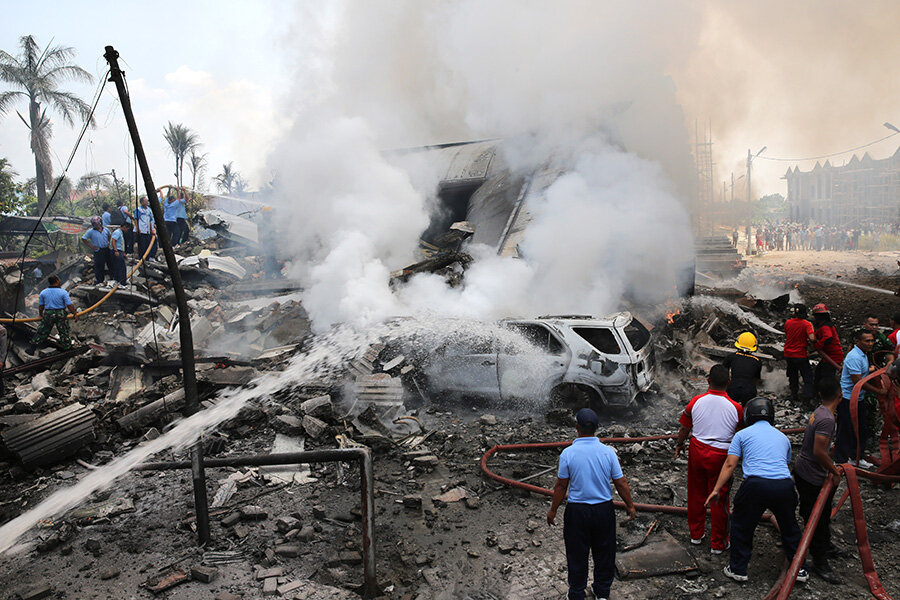At least 37 dead following Indonesian military plane crash, official says
Loading...
| Medan, Indonesia
An Indonesian air force transport plane plowed into a residential neighborhood in the country's third-largest city of Medan shortly after takeoff on Tuesday, killing dozens of people.
Television footage showed the wreckage of the downed C-130 Hercules, a crumpled burning car and a shattered building that local media said contained a spa and homes. Smoke billowed from the site and several thousand people milled nearby.
North Sumatra police chief Eko Hadi Sutedjo told reporters that the plane was carrying 50 people based on its manifest. But air force chief Air Marshall Agus Supriatna said there was uncertainty about the total number of people on board because the plane had traveled from the capital, Jakarta, and stopped at two locations before arriving at Medan on Sumatra, one of Indonesia's main islands.
Some passengers were families of military personnel. Hitching rides on military planes to reach remote destinations is common in Indonesia, a sprawling archipelago that spans three time zones.
Sutedjo said 37 bodies have been transported to Medan's Adam Malik hospital and include a child who was probably about a year old.
None of the bodies has been identified and it's unclear how many of the victims are military personnel and how many are civilians, Sutedjo said.
Indonesia has a patchy aviation safety record. Between 2007 and 2009, the European Union barred Indonesian airlines from flying to Europe because of safety concerns. The country's most recent civilian airline disaster was in December, when an AirAsia jet with 162 people on board crashed into the Java Sea en route from Surabaya to Singapore. There have been five fatal crashes involving air force planes since 2008, according to the Aviation Safety Network, which tracks aviation disasters.
The crash of the transport plane, which had been in service since 1964, occurred just two minutes after it took off from Soewondo air force base.
Supriatna, the air force chief, said the pilot told the control tower that the plane needed to turn back because of engine trouble.
"The plane crashed while it was turning right to return to the airport," he said.
Medan resident Fahmi Sembiring said he saw the gray Hercules flying very low as he was driving.
"Flames and black smoke were coming from the plane in the air," he said.
Sembiring said he stopped not far from the crash site and saw several people rescued by police, security guards and bystanders.
Another man, Janson Halomoan Sinagam, said several of his relatives were on the plane when it left Medan headed for the remote Natuna island chain.
"We just want to know their fate," he told MetroTV, weeping. "But we have not yet received any information from the hospital."
The C-130 accident is the second time in 10 years that an airplane has crashed into a Medan neighborhood. In September 2005, a Mandala Airlines Boeing 737 crashed into a crowded residential community shortly after takeoff from Medan's Polonia airport, killing 143 people including 30 on the ground.
Medan, with about 3.4 million people, is the third most populous city in Indonesia after Jakarta and Surabaya.





